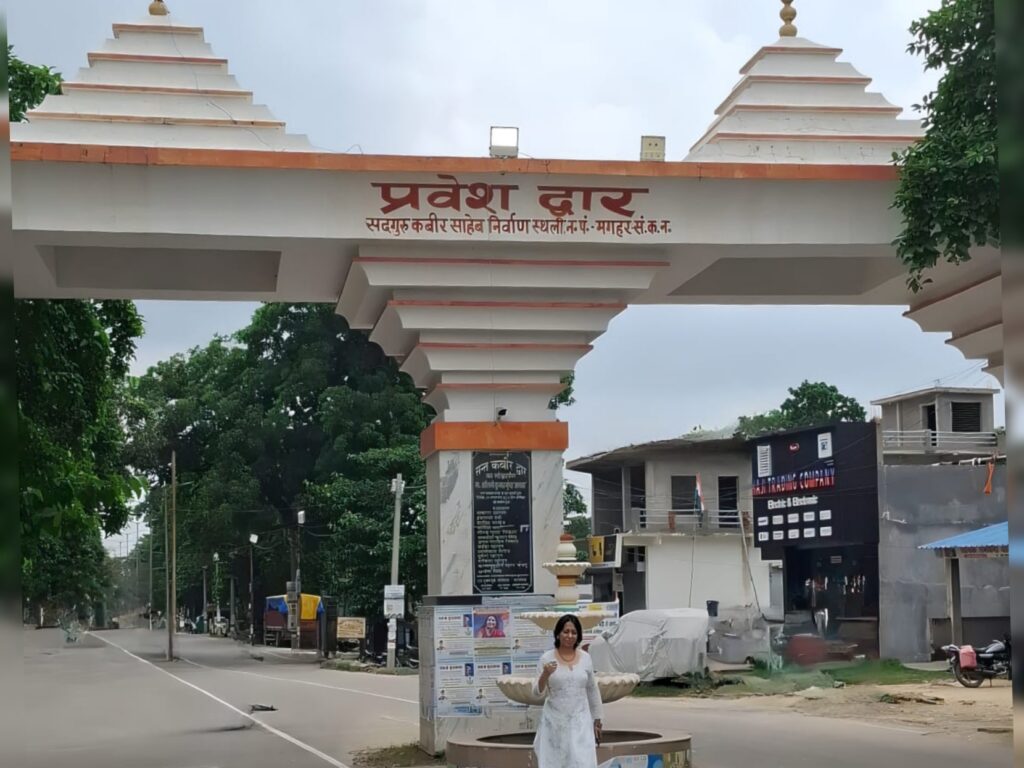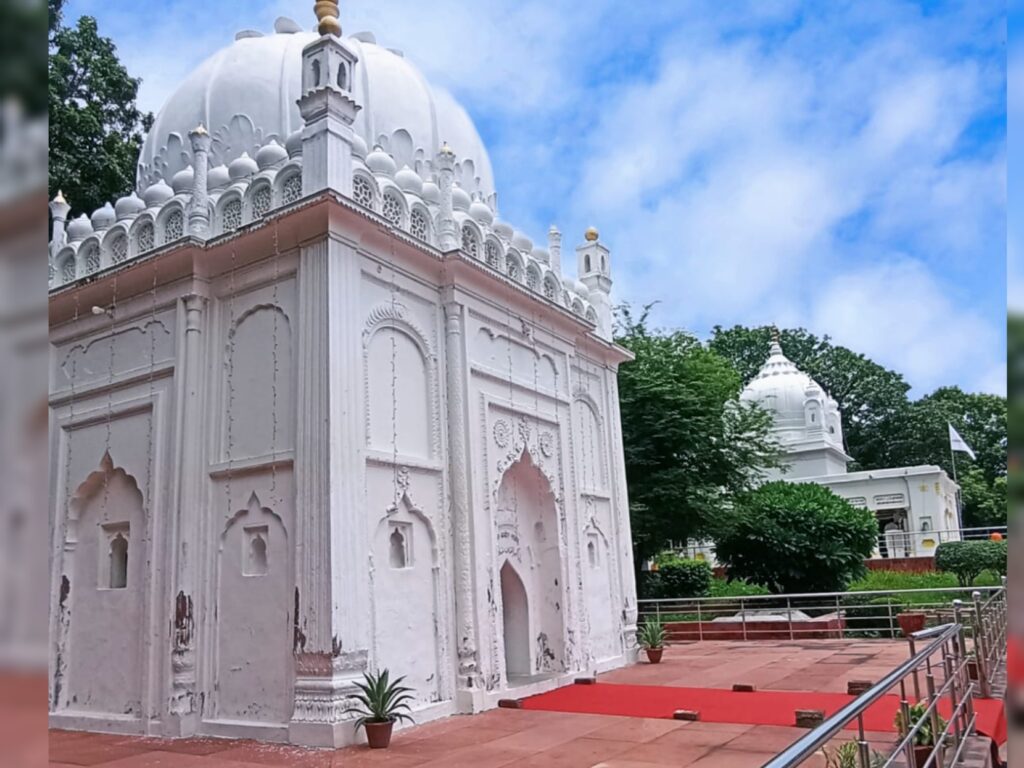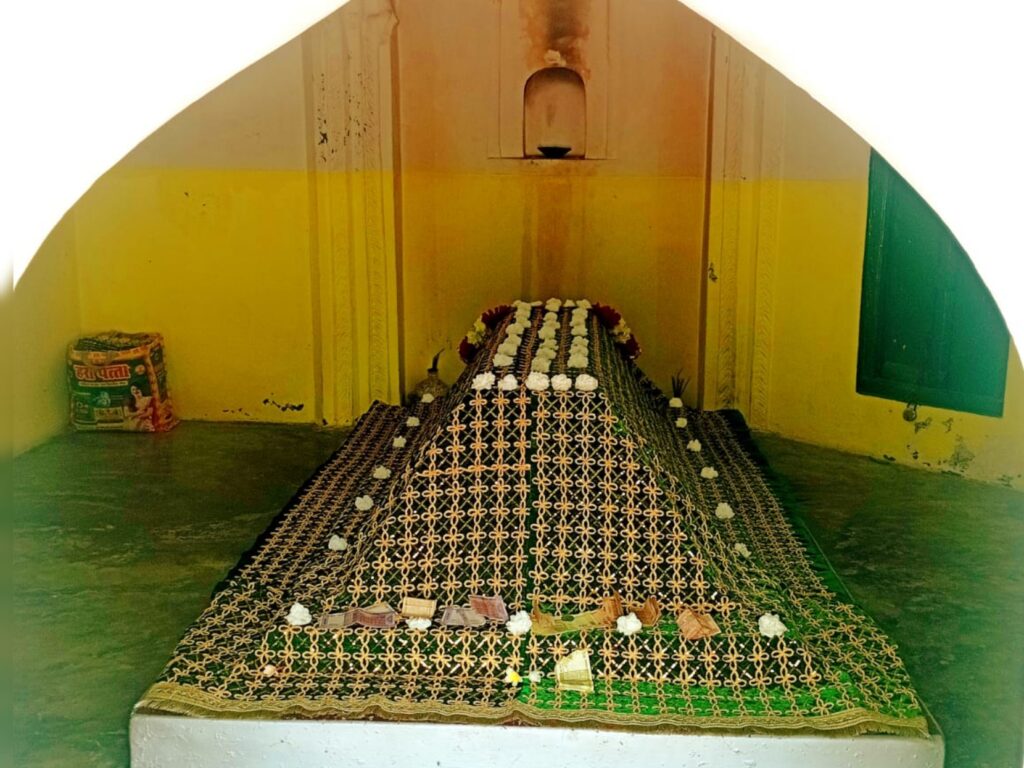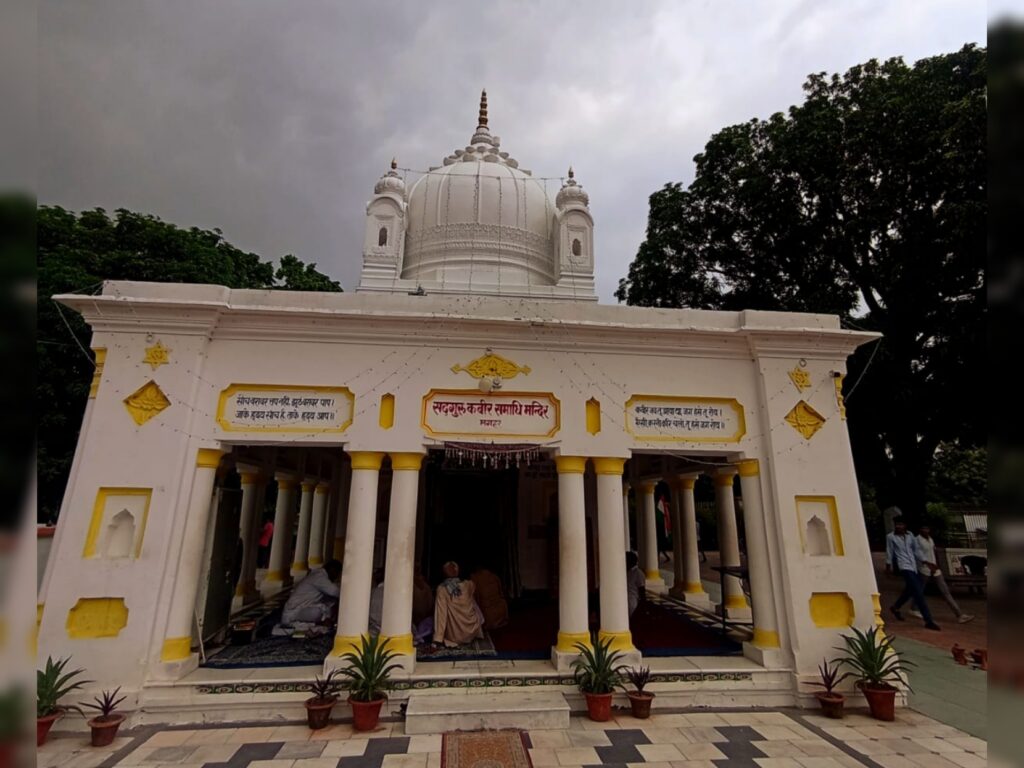The journey to Maghar is a re-exploration of Kabir’s teachings: Sadho, yeh murdon ka gaon

Anujeet Iqbal, Lucknow
When a dream takes shape, the joy it brings is incomparable. I experienced such joy last month when I embarked on a pilgrimage to Maghar with my family. Maghar, that sacred land where Kabir, the master of the infinite, finally found rest (took samadhi). My connection with Kabir dates back to my childhood. In the innocence of those early days, I imbibed the nectar of Kabir’s words from the lips of my grandmother and father. His teachings became indelibly imprinted in my mind.
Kabir’s verses, sanctified in the Guru Granth Sahib, are revered as sacred by us, and he holds the place of a great saint. Thus, my relationship with him began from the moment I first drew breath on this earth. This bond is not just a pointer towards a spiritual path but also a signal toward the realization of life’s reality and the ultimate truth.
The journey to Maghar was not merely a physical one but a re-exploration of Kabir’s teachings embedded deep within my soul. The soil, air, and the entire atmosphere of that place echoed the experience of Kabir’s non-duality and the essence of the formless within the manifest.

Maghar, that sacred land, once engulfed in the cursed depths of its past, known as barren and desolate, today shines with the divine light of Saint Kabir’s penance. His eternal teachings still seem to reverberate in the air. The breeze here holds an unspoken sanctity, as if Kabir’s spirit has merged with it, and it now sings the song of this world’s transience. This is the very blessed land where Saint Kabir embraced his final moments as the ultimate step in his spiritual practice.
As a traveler sets forth toward Maghar, the greenery extending on both sides of the path captures the gaze. It feels as though this is the same land once rendered lifeless and barren by a curse, now reinvigorated by Kabir’s penance, imbued once more with the essence of life. The ancient name of this town was ‘Margharan’, which means ‘abduction on the way.’ In the pages of history, the name Maghar was synonymous with fear and terror, where the threat of bandits reigned over the paths. But with the touch of Saint Kabir’s feet, this land was freed from its curse and granted new life.
Kabir’s words had a miraculous power, capable of transforming a desert into an oasis. It is said that when he meditated here, divine rains poured down, and this land flourished with greenery. Maghar, once cursed, now flourished and prospered through Kabir’s grace. It was here that he chose to spend his final moments, and by doing so, he challenged the superstition that dying in Maghar led to hell.

Kabir conveyed the message that moksha (liberation) cannot be attained merely by traveling to a holy place, but rather, it is found in the purity of the soul and the pursuit of truth. This timeless teaching re-established Maghar as a spiritual landmark. Today, when one enters this town, they do not merely step into a place but enter a symbol. Kabir’s samadhi (Hindu burial shrine) and mazar (Muslim tomb) are both revered here in equal measure, a sacred confluence where the walls of religion and caste crumble, and the triumph of human devotion prevails.
As one walks through the narrow lanes of Maghar, a profound peace envelops the mind. Saint Kabir’s words, such as “Sadho, yeh murdon ka gaon” (O seeker, this is a village of corpses), seem to echo through the air, guiding the seeker toward the truth within their own soul. Sitting near the samadhi, it feels as if Kabir’s voice still resonates here, “Jo ghat prem na sanchare, so ghat jaan masaan” (The heart that is devoid of love is no better than a cremation ground). There is an unseen melody in the air here, one that gently steers the mind towards deep tranquility and offers a glimpse of life’s fleeting nature. It is a spiritual path that connects the seeker to their inner truth. It is the pursuit of that eternal truth where the realization of the soul’s purity and the transient nature of life lies. Saint Kabir, who transcended the worldly bonds and rituals in his lifetime in the pursuit of truth, began his final spiritual practice here on the soil of Maghar. Every individual who comes here attempts to free themselves from the same worldly bonds, just as Kabir had done during his lifetime.

This journey is not just a sign of physical presence but a profound spiritual quest. Here, one encounters the eternal truth enshrined in Kabir’s immortal words, a truth that speaks of life’s impermanence and the immortality of love. Kabir’s voice, which always made the human soul aware of its essence, is still into the soil of Maghar. The moment one steps onto this land, they experience not only a physical journey but a spiritual one, moving toward a deeper understanding of themselves.
Kabir gave the message that ‘moksha’ is not bound to a particular place. It is rooted in the purity of the soul, the realization of truth, and the awareness of life’s transience.
This journey is a form of spiritual practice, where one encounters the fleeting nature of life and the timelessness of love.
However, my experience was not entirely satisfying. Currently, commercial activities are operating under the name of Kabir. Although the temple and the mazar are situated at the same location, the purity and spirituality one would expect from this sacred land is being disturbed. Near the temple, a priest with a camera was offering photographs for a quick payment. This commercial behavior seemed incongruous with the divine aura that should be inherent to this place, enriched with Kabir’s words and meditation.
On the other hand, at the mazar, a caretaker approached me with a receipt for 5100 rupees, demanding a donation. This incident caused me profound sadness and disappointment. How contradictory it is to see such behavior in contrast to Kabir’s teachings, which emphasize the purity of the soul and freedom from worldly attachments. In this sacred land where Kabir demonstrated the pinnacle of truth and love, I witnessed greed and deceit, so it was distressing experience.

